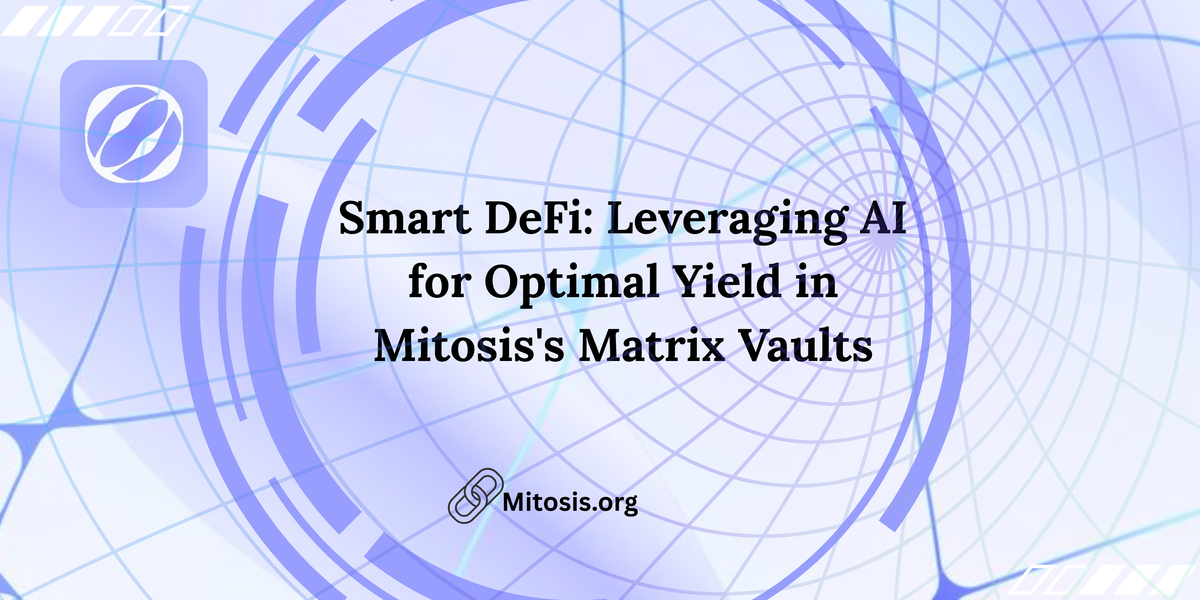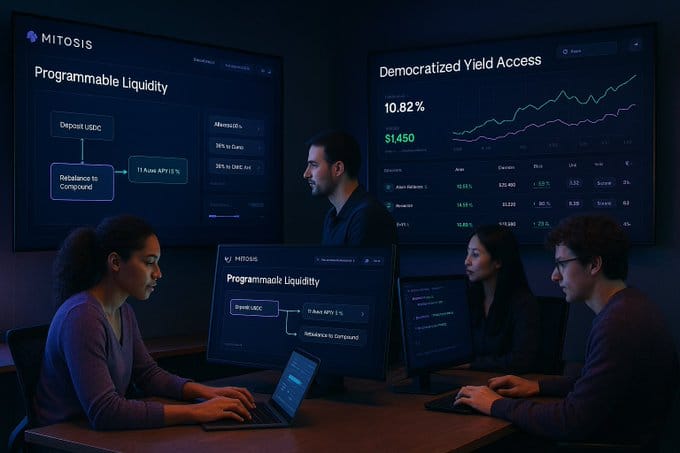Layer-2 Scalability: Mitosis Meets the 2025 Rollup Wave

Introduction: The Rise of Layer-2 Solutions and the Challenge of Liquidity Fragmentation
Ethereum's scalability challenges have led to the proliferation of Layer-2 solutions like Arbitrum, Optimism, and Base. These rollups have significantly increased transaction throughput and reduced fees. However, this rapid expansion has introduced a new problem: liquidity fragmentation. With assets siloed across various L2s, users and protocols face inefficiencies in capital utilization and increased complexity in cross-chain interactions.
Understanding Liquidity Fragmentation in the Multi-Rollup Era
Liquidity fragmentation occurs when assets are dispersed across multiple blockchains or L2s, leading to:
- Isolated Liquidity Pools: Assets locked on one chain are not readily accessible on others, limiting trading and lending opportunities.
- Increased Slippage and Costs: Lower liquidity on individual chains can lead to higher slippage and transaction costs.Mitosis University
- Complex Cross-Chain Operations: Bridging assets between chains often involves multiple steps, increasing the risk of errors and security vulnerabilities.
These challenges hinder the seamless operation of DeFi protocols and the user experience.
Mitosis: A Unified Approach to Cross-Chain Liquidity
Mitosis introduces a novel framework to address liquidity fragmentation through two key components: Ecosystem-Owned Liquidity (EOL) and Matrix Vaults.
Ecosystem-Owned Liquidity (EOL)
EOL is a community-governed liquidity reserve model that allows users to deposit assets into a shared pool, receiving miAssets in return. These miAssets represent a user's stake in the pool and are yield-bearing. The governance mechanism enables token holders to vote on liquidity deployment strategies, ensuring that capital is allocated efficiently across various DeFi protocols. Mitosis University See https://docs.mitosis.org/
Matrix Vaults
Matrix Vaults are structured liquidity campaigns designed for targeted, high-yield strategies. Users deposit assets into these vaults and receive maAssets, which represent their participation in specific campaigns. These vaults offer flexible lock-up periods and reward structures, catering to both short-term and long-term liquidity providers. Mitosis University+1Mitosis University+1Mitosis University
Technical Infrastructure: Seamless Cross-Chain Operations
Mitosis leverages a Layer-1 blockchain secured by EigenLayer, facilitating the issuance of Vanilla Assets upon deposit. These assets can be converted into miAssets or maAssets, depending on the chosen strategy. The protocol's architecture enables efficient cross-chain liquidity management, allowing assets to move dynamically across supported networks without the need for traditional bridges. See Mitosis Docs | Mitosis Docs+3Mitosis University+3Mitosis University+3
Comparative Analysis: Mitosis vs. Traditional DeFi Protocols
Mitosis differentiates itself from traditional DeFi protocols through:
- Single-Asset Deposits: Unlike AMMs like Uniswap, Mitosis allows single-asset deposits, reducing exposure to impermanent loss.Mitosis University+2Mitosis University+2Mitosis University+2
- Dynamic Liquidity Allocation: Governance-driven strategies enable responsive liquidity deployment across multiple protocols and chains.
- Enhanced Yield Opportunities: By aggregating liquidity and deploying it strategically, Mitosis aims to provide higher and more sustainable yields.Mitosis University
These features position Mitosis as a versatile and efficient solution in the DeFi ecosystem. See Mitosis University
Real-World Applications and Ecosystem Integration
Mitosis's framework has practical implications for various stakeholders:
- Liquidity Providers: Access to diversified yield strategies and governance participation.
- DeFi Protocols: Ability to tap into a unified liquidity pool, enhancing capital efficiency and user engagement.
- Developers: Integration with Mitosis's infrastructure allows for the creation of innovative financial products and services.
These applications demonstrate Mitosis's potential to drive growth and innovation in the DeFi space.
Conclusion
As the DeFi landscape continues to evolve, addressing liquidity fragmentation becomes increasingly critical. Mitosis offers a comprehensive solution through its EOL and Matrix Vault frameworks, enabling efficient, cross-chain liquidity management. By fostering community governance and providing flexible yield strategies, Mitosis is poised to play a pivotal role in shaping a more cohesive and scalable DeFi ecosystem.



Comments ()